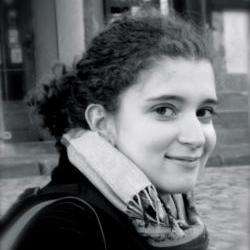Another missed concert for Mikko Franck. Presumably due to his back pain problems, the 34-year-old Finnish conductor was forced to cancel this week’s two concerts at the last minute – the third cancelled invitation from the Orchestre de Paris. The administrative and artistic team faced this complex situation 20 minutes before the concert, and managed it perfectly. Leader and conductor apprentice Philippe Aïche dealt with the Prokofiev concerto, and Paavo Järvi’s assistant conductor Andris Poga took care of the Shostakovich symphony. Both have years of conducting experience – Poga was recently appointed as a musical director of the Latvian National Symphony Orchestra – and were up to it. Despite this makeshift solution and some inevitable little problems, the Orchestre de Paris offered us a beautiful evening on the second night, 12 December.
First of all, it was a gorgeous program. Prokofiev’s Third Piano Concerto (instead of the advertised Fifth) and Shostakovich’s “Leningrad” Symphony are two monuments of the 20th century. The former is one of the most difficult piano concertos in the repertoire. Exposing grossly different themes, styles and modes of expression, it requires from pianist, conductor and orchestra a sensitive touch, extreme rhythmic precision and huge virtuosity. Sometimes harsh and poetic at once, sometimes crystal-clear and mighty at once, the piece is a beautiful reflection of Prokofiev’s complex style. That is undoubtedly one of the reasons of its undeniable success.
Composed between 1913 and 1921 and played for the first time in Chicago, the concerto is far from “Leningrad”. Shostakovich wrote his Seventh Symphony in autumn 1941, at the beginning of the 872-day siege of the town by the Nazis, and dedicated it “to our struggle against fascism, to our coming victory over the enemy, to my native city, Leningrad”. Nine horns, six trumpets, six trombones, seven percussionists and 66 strings take part, among others: 120 musicians are on stage to represent the war, to incarnate courage and despair, bombings and famine, fear and patriotism, and the final victory. The well-known opening military march (a short theme played twelve times over a drum rhythm, first in a light, derisory way, then more and more deafening, with the whole orchestra) contrasts with the lyricism of the Intermezzo. The violins’ passionate moans in the third movement contrast with the cringeworthy background tension that leads to the triumphant Finale. “Leningrad” was meant to be a victory over fascism, and remains a musical victory.
Alexander Toradze contributed greatly to the success of the concert, too. His recording of Prokofiev’s Third Concerto with Valery Gergiev was named by International Piano Quarterly as “historically the best on record”. His romantic approach contrasted with some percussive moments – after an initial surprise, the nuances and delicate rubato found their place within his fine, precise comprehension of the score. It has always been difficult for pianists to take on this well-known, virtuoso concerto, since Prokofiev himself recorded it with the London Symphony Orchestra. Toradze proposed a very different version. And, it worked. Creating a fascinating whirl of notes, his subtle touch was always changing from brutality to charm, from one shade to another, from one interpretation to another. To our amazement, when they did the ending again as an encore, he did not stress the same harmonies, the same dissonances. His living, colourful concerto was not usual at all, but pretty convincing too.
The orchestral musicians took up this concert’s special challenges and gave their all in these very complex scores. Deprived of the conductor they had worked with, they played their part throughout all the same. Andris Poga once more proved his abilities in this repertoire, but the musicians already knew where to go. Actually, Shostakovich’s symphony sometimes looks like a concerto for orchestra: this long epic featured each desk, and we enjoyed several times Giorgio Mandolesi’s poetic bassoon, Alexandre Gattet’s singing oboe, Philippe-Olivier Devaux’s dreaming bass clarinet, and André Cazalet, perfectly dragging his mighty horn desk in the striking Finale.
Evidently, Mikko Franck did have time to work with the orchestra during the rehearsals, and despite his not being there for the concert, his interpretation was still drifting in the air. Slow tempi (the piece was announced to last 70 minutes, but finished almost half an hour after the estimated ending time), a very coloured third movement with strong rhythms and unusual timbres, a palpable tension before the beginning of the Finale... Unfortunately, these interpretative choices did not cover the whole symphony and we lacked deeper volumes, finer sonic constructions. The too-slow tempi made the 120-musician orchestra heavier and there were some tedious parts. But Shostakovich’s genius and Franck’s brainwaves were stronger. Between fire and ice, this much-played, much-recorded symphony found some novelty – that is why we must have more young conductors!
Anyway, these majestic pieces, both initial conductor’s and pianist’s original interpretations, and the Orchestre de Paris’ wonderful musicians easily made us forget a few technical imperfections, some unequal moments and our initial disappointment. Looking forward to hearing you soon in Paris, Maestro Franck!


